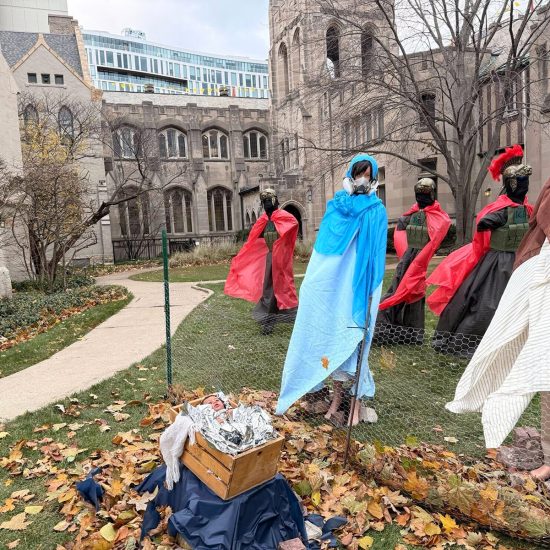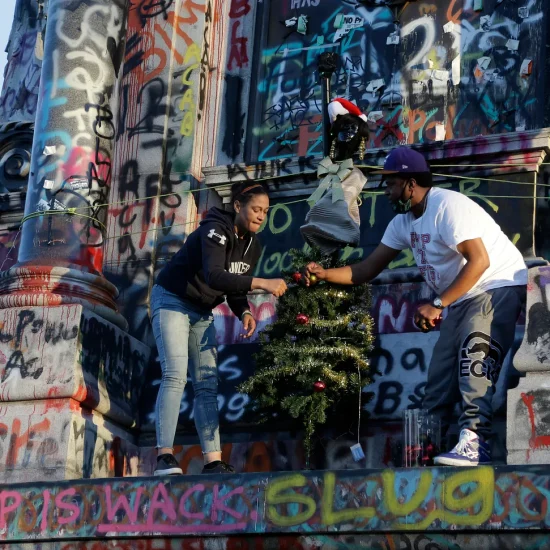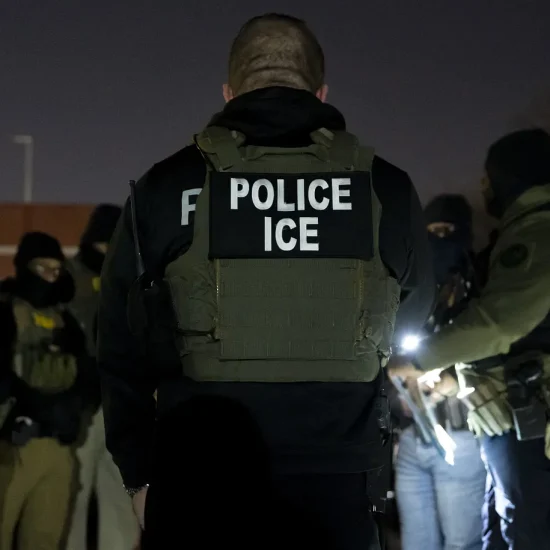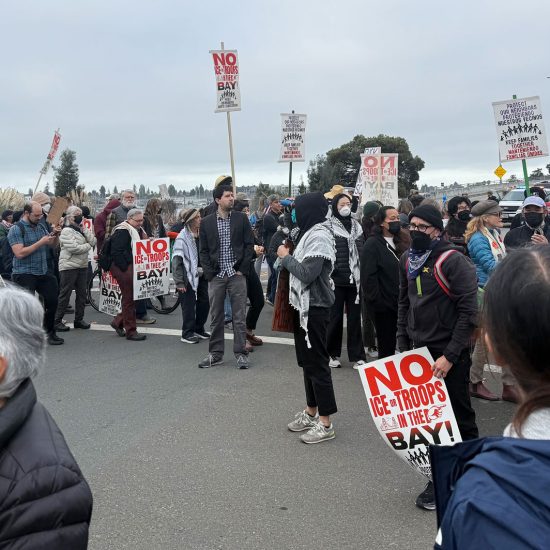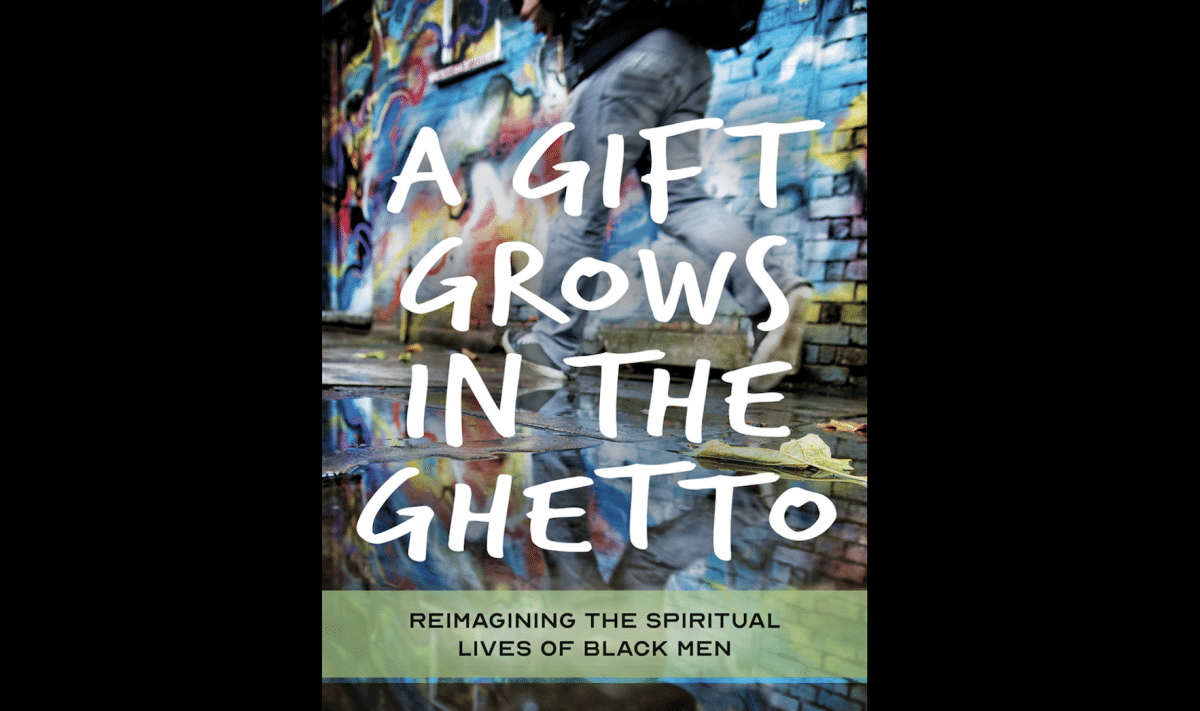
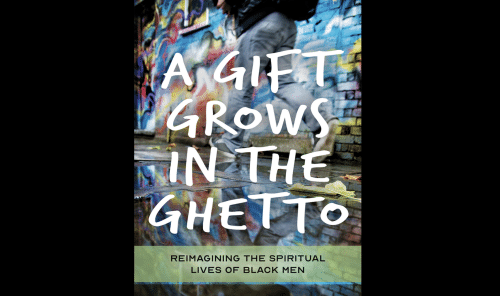
A GIFT FROWS IN THE GHETTO: Reimagining the Spiritual Lives of Black Men. By Jay-Paul Hinds. Foreword by Gregory C. Ellison II. Louisville, KY: Westminster John Knox Press, 2022. Viii + 167 pages.
Living, as we are, at a time when addressing the reality of systemic racism and injustice — even as we continue to witness the deaths of young black men at the hands of police officers — is considered by some as being “woke,” we face the question of how we might address the possibilities of “reimaging the spiritual lives of Black men”? We are witnessing attempts by some to protect a certain inherited vision of American life, by disregarding the realities of our national history and its non-white population. The truth is, America’s history is complex, and systems have existed and continue to exist that have pushed members of society to the margins. That is especially true of African American men. The question for those Black men living in the ghetto is whether God is involved or present. This is a question that as a white male who has lived in small towns and suburbs cannot truly answer, for this is not my story. I can listen and learn, but never completely understand. This is especially true in the current context.

Robert D. Cornwall
I read Jay-Paul Hinds’ book A Gift Grows in the Ghetto with an openness to learn more about the realities of the spiritual lives of Black men. The author of this book is an assistant professor of pastoral theology at Princeton Seminary. In this book, Hinds brings his training in psychology to his exploration of the spiritual lives of Black men, especially those who live in and experience the ghetto. He begins the book, in his introduction, by sharing how the judicial system in Los Angeles, back in the day of Rodney King (I was living in Southern California at the time), approached Black men with the acronym NHI (No Human Involved). That acronym enabled members of the police force to beat Rodney King nearly to death, for in their eyes he was not a human being. Unfortunately, it appears that this view of things is still present in some police departments. While this acronym is the starting point, he turns it on its head to explore the reality of living in a ghetto. In this context a different acronym held court. That acronym is NGI or “No God Involved.” In other words, for many Black men living in the ghetto, God is not present.
Hinds writes this book as a way of discerning how God is present in the ghetto and the lives of Black men. What NGI has done is give “Christian clergy and laypersons the authority, so to speak, to enact spiritual violence against those deemed godless.” (p. 7). In response to the realities of the ghetto experience, Hinds wishes to reimagine the lives of Black men as a gift. He does so with the person of Ishmael in mind. He seeks to reimagine the ghetto, which is a place of separation and abandonment, in terms of the wilderness that Ishmael experienced after Abraham expelled him and his mother from their home. While life in the ghetto can be experienced as a place of despair, Ishmael discovered in the wilderness a place of growth. That is because Ishmael was nourished by his relationship with God who met him in the wilderness. The question here is how black men can be nourished through a relationship with God in the wilderness that is the ghetto.
Hinds brings a multi-disciplinary approach to this conversation about the spiritual lives of Black men. He draws on his study of psychology, social sciences, and biblical studies. With these disciplines in hand, Hinds starts this conversation in chapter one, which he titles “I WAS A MAN NOW,” by exploring the dominant images of African American manhood. More specifically, he takes note of images such as Sambo and Uncle Tom. I learned a lot about these images, which overturned some of my own earlier presuppositions about these images. The point here, from Hinds’ perspective, is that many have found the need for new models of Black manhood. Thus, we move in chapter 2 to one of those efforts to develop a new model, that is the image of the hero. Here Hinds brings into the conversation a look at Freud’s vision of the hero, reflecting on Freud’s own realities of relationships with other males that underscore his vision of the hero. In examining this image, Hinds invites us to consider the question of incompleteness that many men feel. To do this, he uses the story of Richard Wright’s experience with his father as a way of entering into this conversation. The problem for both Freud and Wright is that their fathers never “provided them with the gift of heroic manhood.” What they failed to see is that their reality as sons was a gift. He writes that “The ghetto has become the place where gifts, both fathers and sons, are cast away to suffer the sorrow of completeness left unwrapped, unloved, and unfulfilled” (p. 67).
Having examined various models of manhood that have failed to undergird the spiritual lives of Black men, Hinds moves in chapter three to examine the nature of the ghetto itself. He makes note of the origins of the term in attempts to segregate Jews in Europe, which becomes a reality in the United States after the Great Migration led to the movement of Black folks from the South to northern cities (such as Detroit). The image of the ghetto as laid about by many experts is that the ghetto is marked by the presence of disorganized families that are largely single-parent in nature. What this means is that for many the ghetto reality is imaged in terms of broken families marked by absent fathers and families headed by Black women. The unfortunate result of this reality for many Black men is that they often end up expressing their manhood in destructive ways. Hinds speaks of a “code of the street” that has failed to help these men address the challenges of ghetto life.
Having laid out these images and realities, we turn in chapter 4 to an attempt on Hinds’ part to bring the images of the wilderness and gifts together in conversation. This is the point where Hinds specifically attempts to reimagine the spiritual lives of young Black men. This is where Hinds turns from social analysis to theology. To do this, Hinds takes note of the diverse ways in which the wilderness is understood by biblical scholars. He notes that the wilderness is often portrayed as a place of desolation where nothing can grow, Nevertheless, the wilderness is also understood to be a place of spiritual transformation. This is seen in the story of Hagar and Ishmael, which Hinds believes is undervalued. I found this chapter especially helpful, in part because he brings to the fore the image and reality of Ishmael in ways that I had not previously noticed. He points out that even in Black theology, Hagar and Ishmael’s experience of the wilderness is undervalued because the emphasis has been placed on the Exodus event. But the experience of Hagar and Ishmael opens up a very intriguing conversation about divine encounters and giftedness.
As we move into chapter 5, Hinds expands this conversation about gifts. While the primary diagnosis of the challenges of Black men in the ghetto is attributed to poor mental health, something Hinds acknowledges, he wants to add back into the conversation the spiritual dynamic. In doing this, he asks whether, in the context of the ghetto, young Black men can know God’s presence in their lives and their surroundings. In answering this question, he again draws on the giftedness experienced by Ishmael in the wilderness. He points out that, unlike Isaac, Ishmael never went through the weaning ceremony that ushered him into manhood. However, in his divine encounters in the wilderness, God ushered him into manhood. The question here is whether and how Black men can discover their identity through their encounter with God so that they might find life and not just experience despair in the ghetto.
Finally, when we come to chapter 6, which Hinds titles “Warning: God Don’t Like Ugly,” he brings to a conclusion the connection of the ghetto to the wilderness, and in doing so connects the lives lived by Ishmael and Black men. Here Hinds addresses how the wilderness image has been rejected in the past but could be an important space for divine encounters. In this case, Ishmael can be a model for reimagining the spiritual lives of Black men. In the end, Hinds seeks to address the presupposition of NGI (No God Involved) in the reality of the Ghetto. For Hinds, hope can be experienced in the ghetto by experiencing the gift that is the divine encounter. He wants Black men to understand that the gift lies within them. That gift is experienced in the recognition that “God takes an active role in developing [that gift] so that we can find a sense of home even in a desolate place” (p. 134).
I read A Gift Grows in the Ghetto from the social location of being a white man who has never experienced the ghetto or the reality of what it means to be a Black man, especially a Black man living in the ghetto. While this is my personal experience, it’s possible to listen and learn even if I cannot fully understand. In some ways, because this book doesn’t describe anything close to my experience, it’s difficult to review this book. While this is true, I did find it to be enlightening. Hopefully, it can prove helpful to the larger church so that the churches can discover the resources to help Black men encounter God even in the ghetto, a place understood to be marginalized where despair is the order of the day. Even there, if understood in terms of wilderness and Ishmael’s encounters with God, we can believe that God can be encountered in the ghetto. Therefore, the gift of personhood can be reclaimed and reimagined as a result. While it may seem that for some of us, A Gift Grows in the Ghetto is written for someone else, there is much here that can speak to all of us, whatever our social location. For that reason, I highly recommend it.
This review originally appeared on BobCornwall.com.
Robert D. Cornwall is an ordained minister in the Christian Church (Disciples of Christ). Now retired from his ministry at Central Woodward Christian Church (Disciples of Christ) of Troy, Michigan, he serves as Minister-at-Large in Troy. He holds a Ph.D. in Historical Theology from Fuller Theological Seminary and is the author of numerous books including his latest books: Called to Bless: Finding Hope by Reclaiming Our Spiritual Roots (Cascade Books, 2021) and Unfettered Spirit: Spiritual Gifts for the New Great Awakening, 2nd Edition, (Energion Publications, 2021). His blog Ponderings on a Faith Journey can be found at www.bobcornwall.com.



